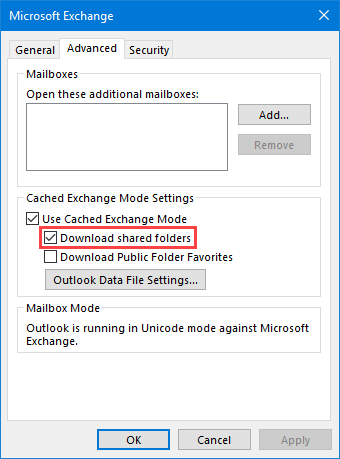

The values above are taken from a new mail profile with only the Cached Exchange Mode setting changed. Please note that the “00036601” registry key stores more connection settings that just wether or not Cached Exchange Mode is enabled. This allows you to enable/disable it with a simple logon script to create a standard in your organization without the need of forcing the recreation of the entire profile at start-up or visit each client.Ĭached Exchange Mode is controlled by the following key Įnabled with Public Folders/Favorites: 84 05 00 00 This makes it really hard to determine and control remotely whether your clients have Cached Exchange Mode enabled.Įnabling/Disabling Cached Exchange Mode can be controlled though the registry. When you upgrade from a previous Outlook version with an Exchange mailbox to Outlook 2003 Cached Exchange mode is disabled by default. When you create a new profile in Outlook 2003 Cached Exchange mode is enabled by default.

In the reading pane, in the Setting column, open the policy that you want to set by double-clicking it. The benefits of enabling this is reducing network traffic, faster responds time of the Outlook client (especially with large attachments), being able to use the Junk E-mail Filter and being able to work off-line. In the tree view, go to User Configuration > Policies > Administrative Templates > Microsoft Outlook 2016 > Account Settings > Exchange > Cached Exchange Mode. If makes a local copy of the Exchange Mailbox.

From the Account Settings window, click on your email address and then click the 'Change' button. Then click on the 'Account Settings' tile, and choose 'Account Settings.' from the dropdown menu.


 0 kommentar(er)
0 kommentar(er)
